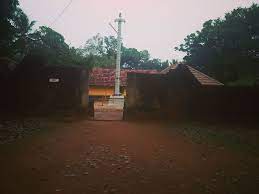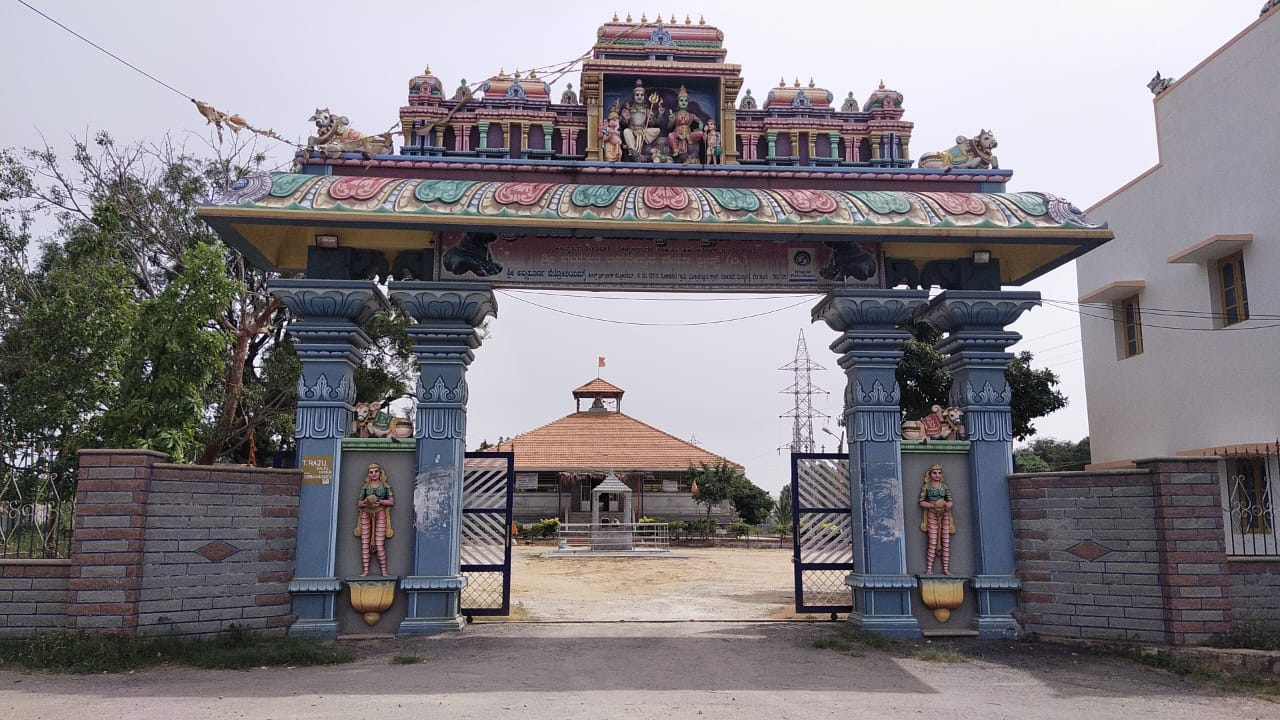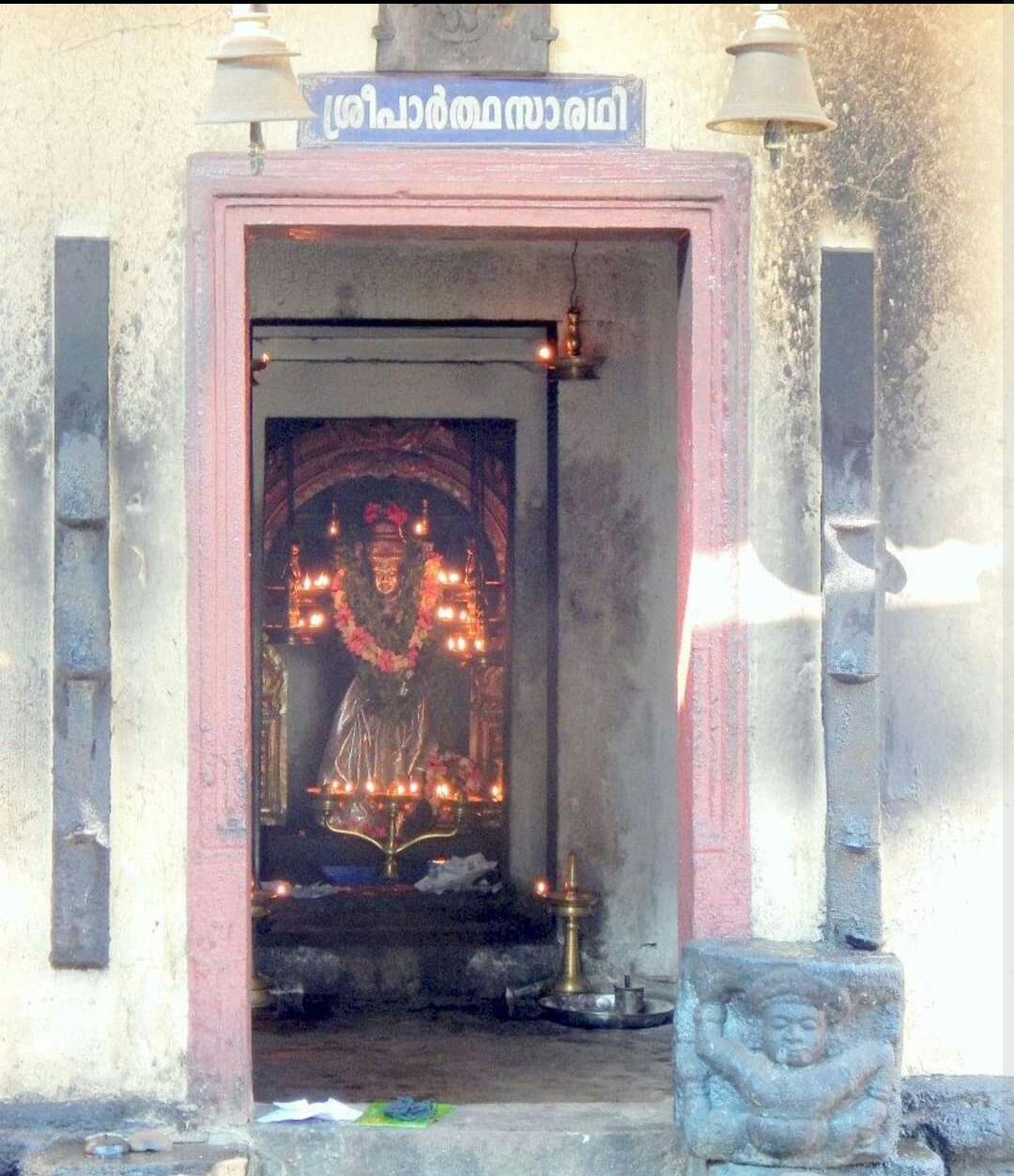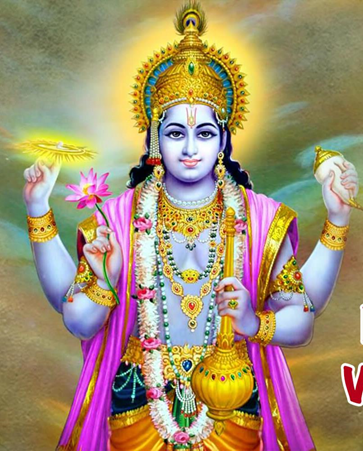
Lord Maha Vishnu is the Supreme Godhead of Vaishnavism (Para Brahman or Nirguna Brahman) in puranas . He is called Swambhagwan in the Ramayana and Mahabharata. Vishnu is one of the three main gods in Hinduism and the Absolute Supreme being in the Vaishnava tradition. Vishnu is one of the members in the trimurti in Hinduism. Vishnu is the preserver god, which means he protects the universe from being destroyed and keeps it going, according to this religion, and he has come to earth in nine forms (called avatars) so far, with one yet to come at the end of Kali Yuga to destroy evil. His most famous incarnations are Rama, Krishna, Parashurama And Narasimha. Vishnu's wife is Lakshmi, the goddess of fortune. Lord Vishnu is usually shown with light blue skin and four arms. The Lord holds a lotus (Padma), the Indestructible Mace Of Lord Vishnu (Kaumodaki), a conch (Shankha) and the Unstoppable Disc Of Lord Vishnu (Sudarshana Chakra) in each of his four hands. He is known to take many guises. But the three main forms of Vishnu are Mahavishnu Karanodakshayi Vishnu (Mahavishnu), Garbhodaksayi Vishnu and Kshirodakashayi Vishnu. The latter two being the expansion of Karanodakshayi Vishnu
Lord Vishnu holds items in his four hands. The Lord holds a conch which represents victory in the upper left hand, The Lord holds the Sudarshan Chakra which represents Lord's strength in the upper right hand, a lotus (flower) which represents peacefulness in the lower left hand, and the the Kaumodaki in his lower right hand.
Vishnu is one of the most important gods in the Hindu pantheon and, along with Brahma and Shiva, is considered a member of the holy trinity (trimurti) of Hinduism. He is the most important god of Vaishnavism, the largest Hindu sect. Indeed, to illustrate Vishnu’s superior status, Brahma is, in some accounts, considered to have been born from a lotus flower which grew from Vishnu’s naval. A complex character, Vishnu is the Preserver and guardian of men (Narayana), he protects the order of things (dharma) and, when necessary, he appears on earth in various incarnations or avatars to fight demons and fierce creatures and so maintain cosmic harmony.
Vishnu represents Sattvaguna and is the centripetal force as it were, responsible for sustenance, protection and maintenance of the created universe. Etymologically speaking, the word ‘Vishnu’ means ‘one who pervades, one who has entered into everything.’ So he is the transcendent as well the immanent reality of the universe. He is the inner cause and power by which things exist.
Vishnu resides in the milky waters of Vaikunth on a bed made of the coils of the thousand hooded great serpent, Adishesha of infinite dimensions. Goddess Lakshmi, his consort attends upon him. Symbolically the ocean stands for bliss and consciousness, the serpent for time, diversity, desire and illusion, and the goddess Lakshmi for the material things and powers of the creation.
The colour of Vishnu is the colour of a dark blue cloud. It is the colour of the sky, denoting his cosmic dimensions and his connection with the Vedic gods of rain and thunder and his relationship with the earth. He is usually depicted with one face, four arms, usually in a standing posture or in a resting posture. He wears a necklace made of the famous Kaustubha gem that rests on his left chest and another garland of flowers and gems by name Vaijayanti.
His four arms hold sankha (a conch), chakra (discus), gada (mace) and padma (lotus) respectively. The conch stands for the five elements, the sound of AUM, salagrama, goddess Lakshmi, the waters, purity and perfection. The discus is the terrible weapon of Vishnu which he used to destroy the evil and protect the righteous. It symbolically represents the light bearing sun, which illuminates and removes darkness. It also stands for higher consciousness which destroys all illusions. The mace represent the power of knowledge while the lotus symbolizes beauty, harmony, purity, water element, creation and self realization.
Garutman or Garuda, the mighty bird-vehicle of Lord Vishnu is a minor deity invariably found in all the Vaishnava temples.
Another deity invariably found in the Vishnu temples, especially in the South, is Hanuman the monkey-god. The Ramayana pictures him as a highly erudite, cultured and refined person. He is as strong as he is wise, and as devoted as he is strong and wise, a rare combination indeed.
These are gods who descended into this world for a specific task and with an aspect of Lord Vishnu. Mention may be made of Dattatreya, Kapila, Dhanvantari, Mohini, Hayagriva, Naranarayana, Vedavyasa and Yajna.
Lord Vishnu is one of the widely worshiped gods in India. In Hinduism, Vishnu is one of the five primary gods. In Hinduism Vishnu is worshiped as Preserver of the universe. He is married to Lakshmi, goddess of wealth. Every time mankind faced a threat from demon, an incarnation of Lord Vishnu came to earth to save humanity. Today some of the grandest and wealthiest temples in India are dedicated to Lord Vishnu or his incarnations. Here are some must visit temples of Lord Vishnu in India.
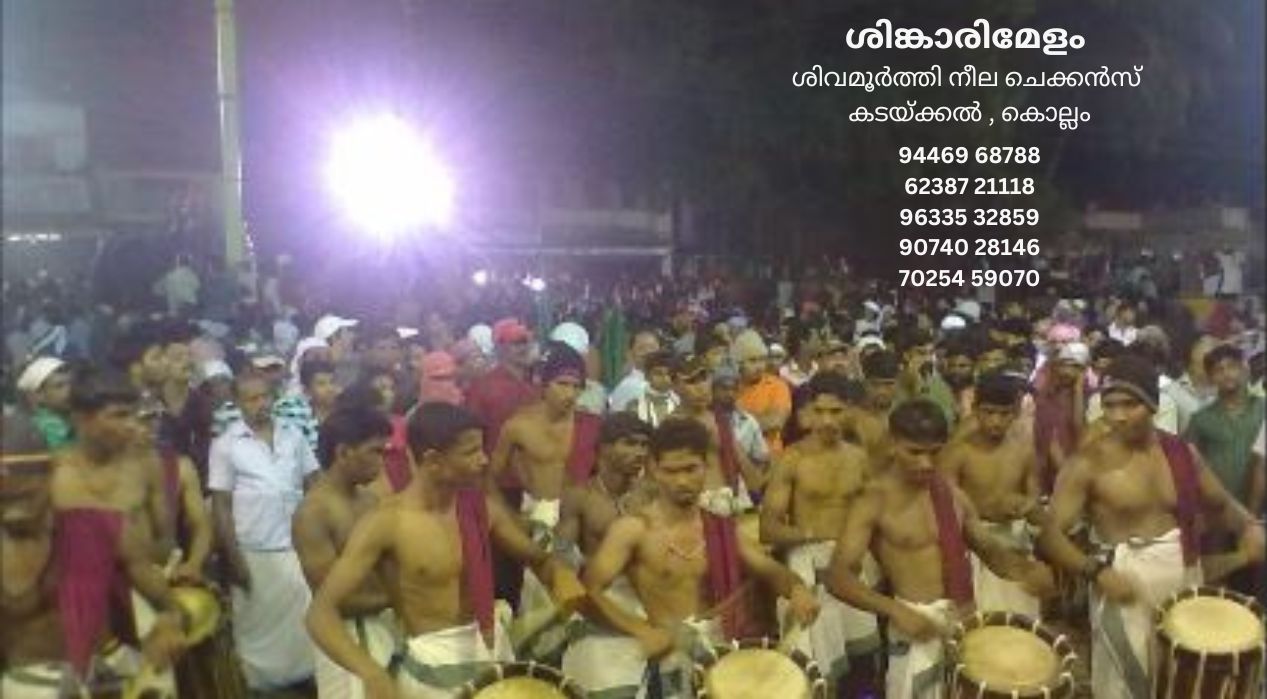
27Nov2022
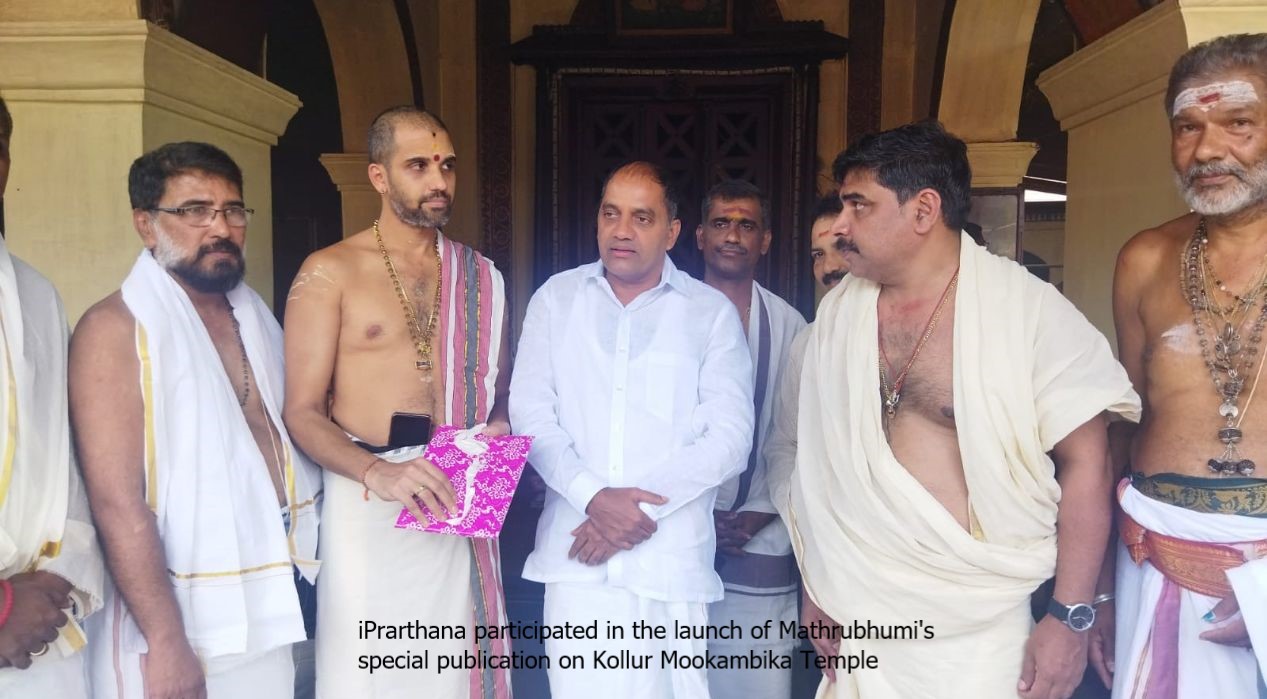
4

1

1
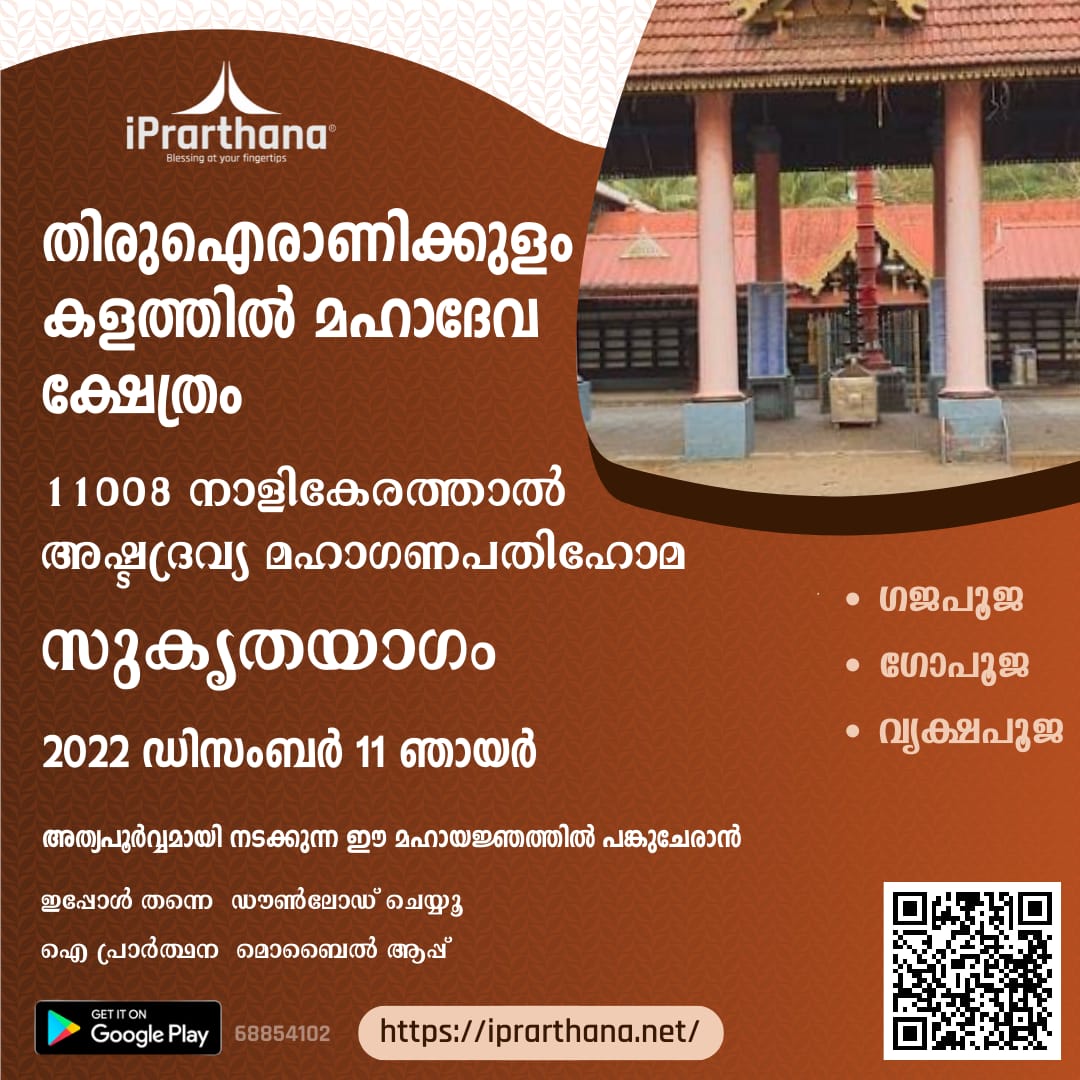
Add
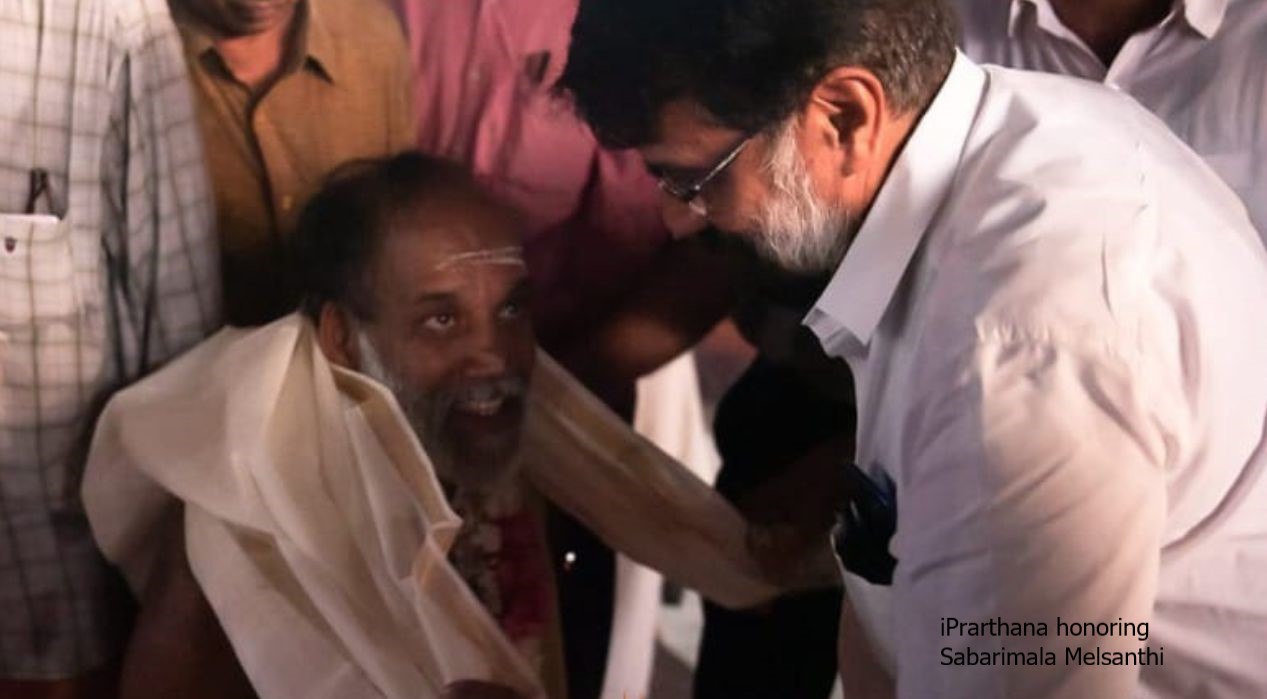
5

3
